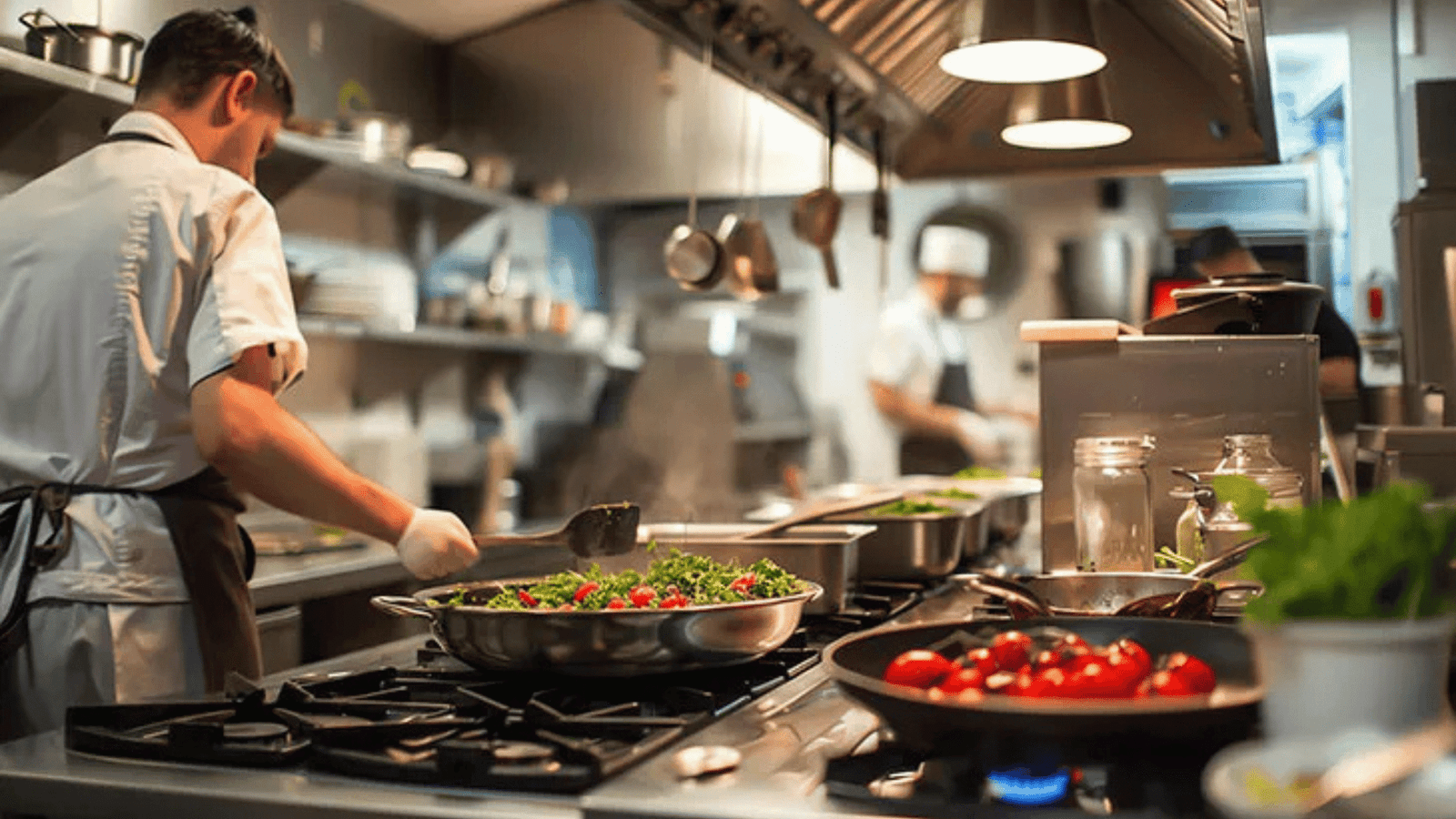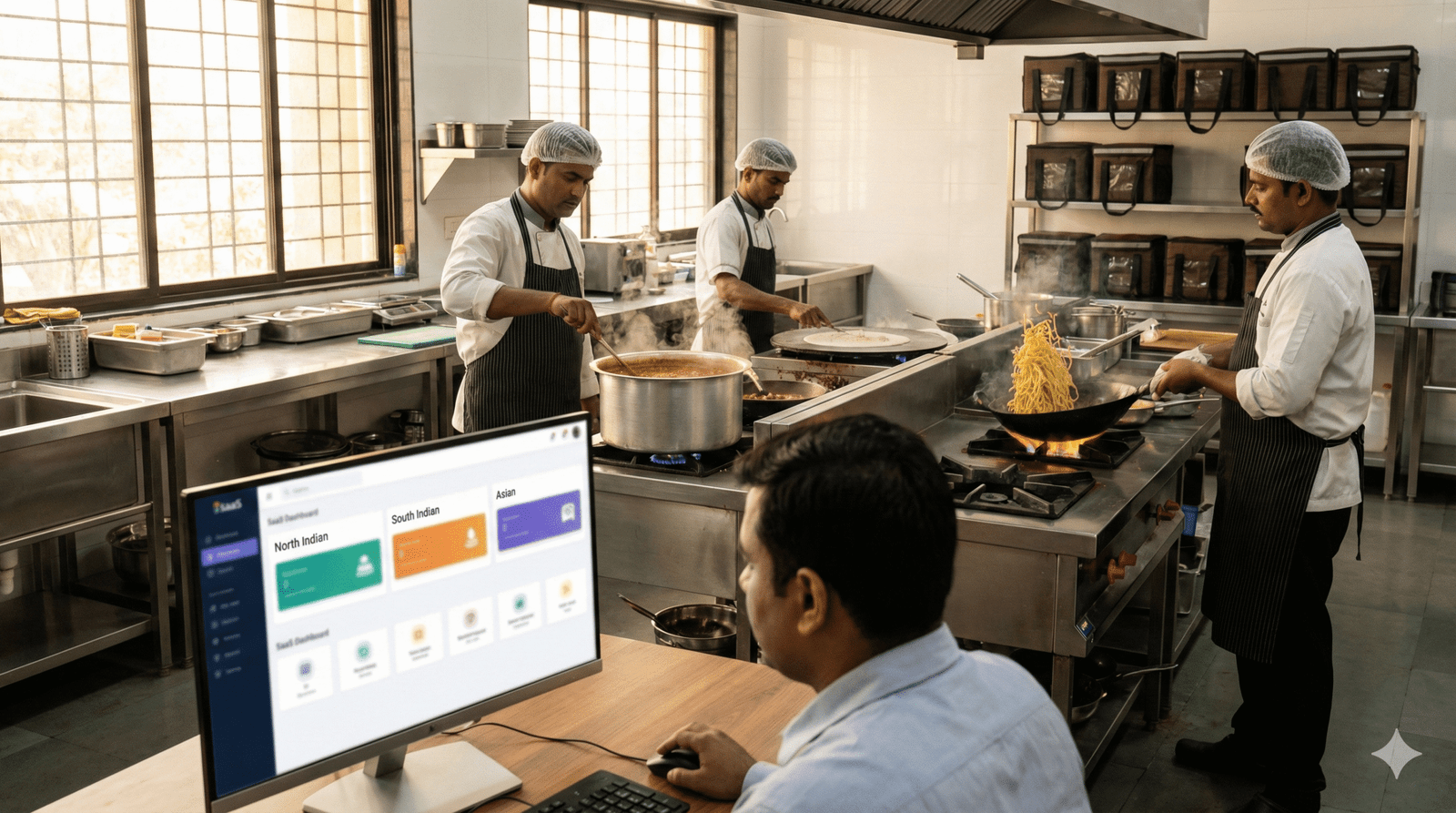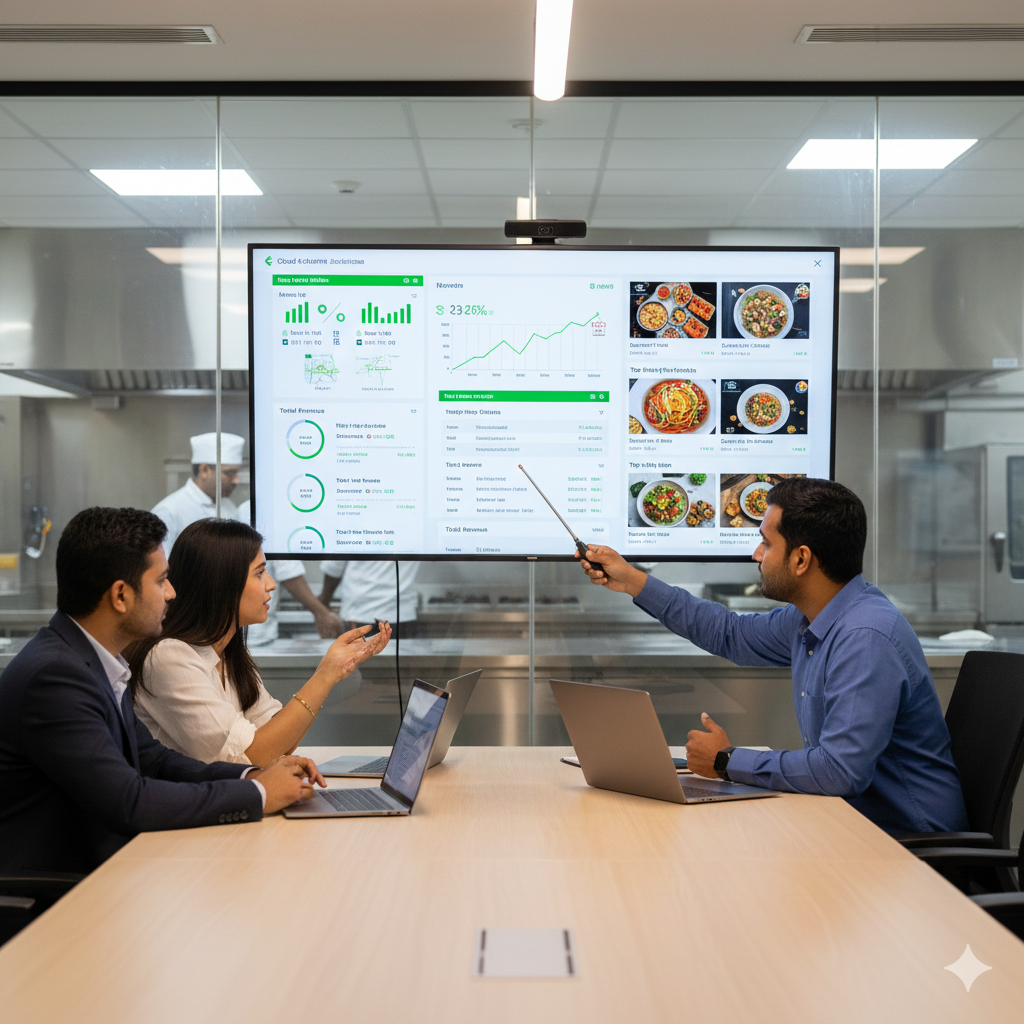The rise of cloud kitchens has revolutionized the food industry by offering entrepreneurs a cost-effective way to run a restaurant without a physical dining space. Cost-saving techniques While the concept itself is budget-friendly, operational expenses can still pile up if not managed efficiently. This Artical highlights practical cost-saving techniques that can help cloud kitchen startups maximize their profitability while maintaining quality and service.
1. Optimize Menu Design

A well-thought-out menu can significantly reduce costs. Focus on a limited but diverse menu that includes high-margin dishes.Cost-saving techniques Avoid complex recipes that require expensive ingredients or special equipment. Use overlapping ingredients for multiple dishes to minimize wastage and inventory costs.
Pro Tip: Use data analytics to identify your best-performing dishes and adjust your menu accordingly.
2. Use Affordable Packaging Solutions
Packaging is a critical component for cloud kitchens as it impacts the freshness of food and brand perception. Opt for sustainable yet cost-effective packaging options. Bulk purchasing and working with local suppliers can also help reduce costs.
Pro Tip: Custom packaging is great for branding but keep it simple to avoid extra expenses.
3. Leverage Technology for Efficiency
Investing in technology can save significant costs in the long run. Use cloud-based POS systems to manage orders, track inventory, and analyze sales data. Automation tools can streamline kitchen operations, reducing the need for additional staff Cost-saving techniques.
Pro Tip: Platforms like Zomato and Swiggy often provide integrated tech solutions tailored for cloud kitchens.
4. Location Matters
Choosing the right location can save you substantial rental costs. Since cloud kitchens don’t require a prime spot, opt for locations in suburban areas or industrial zones with lower rent. Ensure the area is well-connected for efficient delivery Cost-saving techniques.
Pro Tip: Shared kitchen spaces can further lower rental expenses.

5. Streamline Staff Requirements
Unlike traditional restaurants, cloud kitchens require fewer employees. Hire versatile staff who can handle multiple roles, such as cooking, packaging, and inventory management. Focus on training your team to improve productivity Cost-saving techniques.
Pro Tip: Partnering with staffing agencies for part-time or contract workers can help reduce costs.
6. Negotiate Supplier Agreements
Build strong relationships with suppliers to negotiate better deals. Buying in bulk or forming partnerships with local vendors can significantly cut costs. Always have multiple suppliers for each ingredient to avoid overpaying during shortages.
Pro Tip: Track seasonal price fluctuations and stock up on non-perishables during low-cost periods.
7. Reduce Energy Costs
Energy consumption is a significant expense for any kitchen. Invest in energy-efficient equipment and LED lighting. Regularly maintain appliances to ensure they operate efficiently and consume less power.
Pro Tip: Use time-based energy plans to save costs during off-peak hours.
8. Use Data Analytics for Decision-Making

Analyze sales data to identify peak hours, popular dishes, and customer preferences. This helps in optimizing inventory and minimizing waste. Use insights to plan promotions and marketing strategies effectively.
Pro Tip: Invest in customer relationship management (CRM) software to track customer orders and feedback.
9. Minimize Food Wastage
Food wastage directly impacts your bottom line. Use precise portioning techniques and keep track of inventory to avoid spoilage. Consider introducing creative dishes using leftover ingredients.
Pro Tip: Donate excess food to local NGOs to reduce waste and enhance your brand image.
10. Affordable Marketing Strategies

Instead of spending heavily on traditional advertising, focus on digital marketing. Use social media platforms to engage with customers and promote your brand. Collaborate with food influencers for cost-effective promotions. Email marketing is another low-cost way to retain customers.
Pro Tip: Offer discounts or combo deals during off-peak hours to attract more customers.
11. Collaborate with Delivery Partners
Partner with third-party delivery services like Zomato, Swiggy, or Uber Eats to save on logistics and delivery staff costs. While these platforms charge a commission, they also offer access to a vast customer base.
Pro Tip: Offer direct ordering through your website or app to reduce dependency on third-party platforms.
12. Invest in Long-Term Equipment
While it may be tempting to buy low-cost equipment initially, investing in high-quality appliances can save money in the long run. Durable equipment reduces repair and replacement costs over time.
Pro Tip: Look for used or refurbished equipment from trusted suppliers.
13. Regular Financial Audits
Conduct monthly financial audits to identify unnecessary expenses and areas for improvement. Keep track of all operational costs and set a budget for each aspect of the business.
Pro Tip: Use accounting software to simplify financial management and avoid costly errors.
Read More :
Conclusion
Running a successful cloud kitchen on a budget requires strategic planning and efficient management. By optimizing your menu, leveraging technology, minimizing waste, and adopting cost-effective marketing strategies, you can significantly reduce expenses without compromising on quality. Implement these cost-saving techniques to make your cloud kitchen a profitable venture in the competitive food industry.
FAQ
1. What is the biggest cost factor for cloud kitchens?
The biggest cost factor for cloud kitchens is inventory and ingredient procurement. Efficient inventory management can help minimize this expense.
2. How can I reduce delivery costs for my cloud kitchen?
Partnering with third-party delivery services and optimizing delivery routes using technology can reduce delivery costs.
3. Are shared kitchen spaces a good option?
Yes, shared kitchen spaces can significantly lower rental costs, especially for startups.
4. How can I minimize food wastage in my cloud kitchen?
Accurate portioning, regular inventory tracking, and creative use of leftover ingredients can minimize food wastage.
5. Is digital marketing effective for cloud kitchens?
Absolutely! Digital marketing is cost-effective and helps reach a larger audience through platforms like social media and email campaigns.





